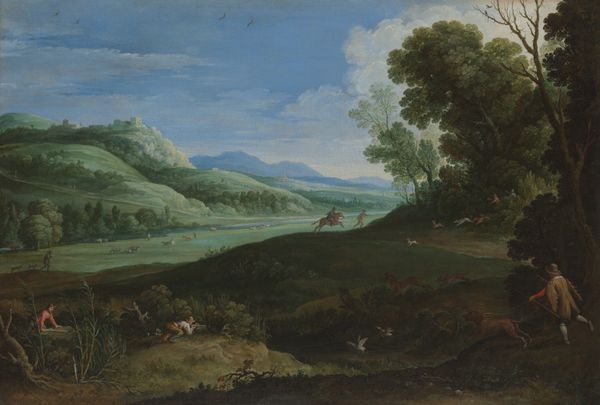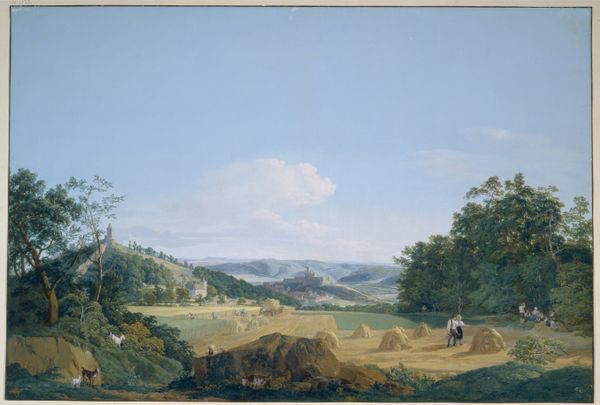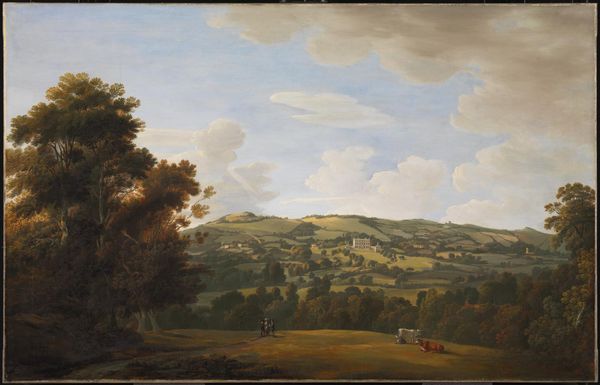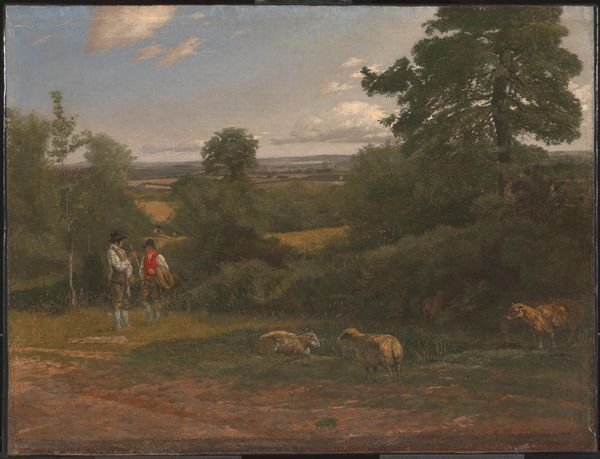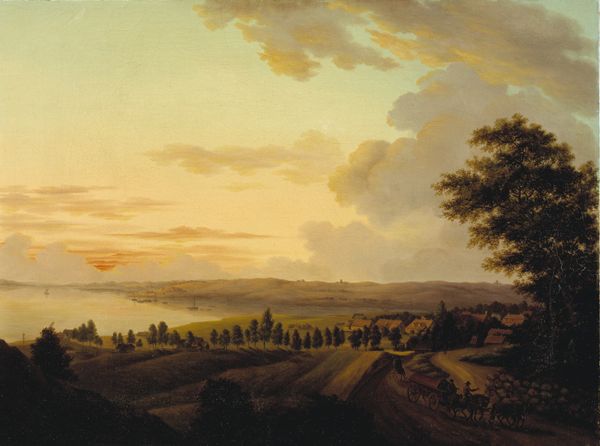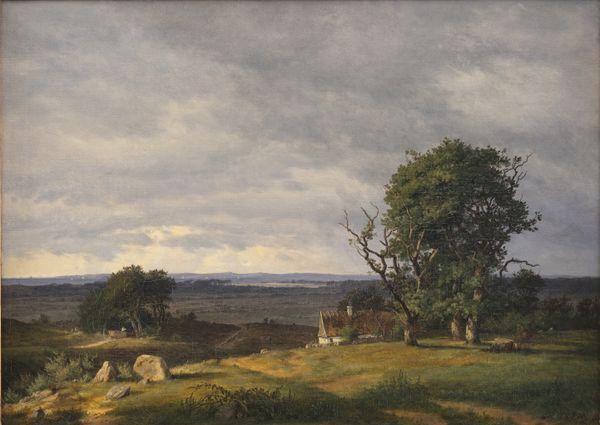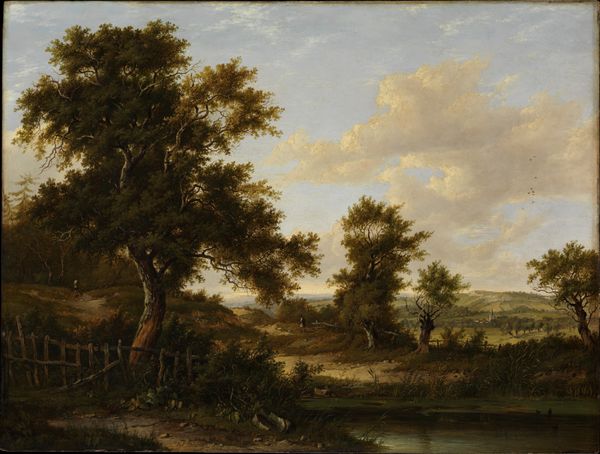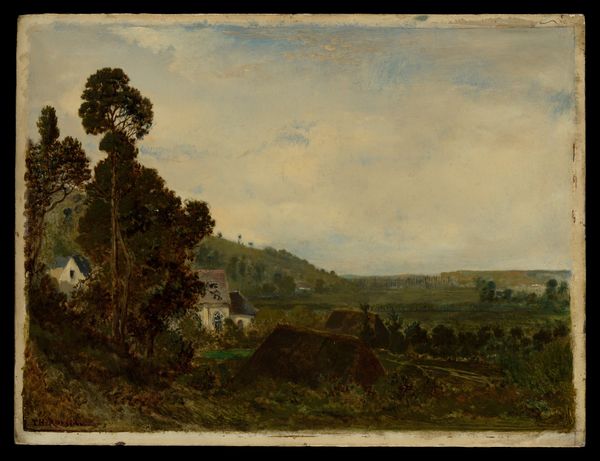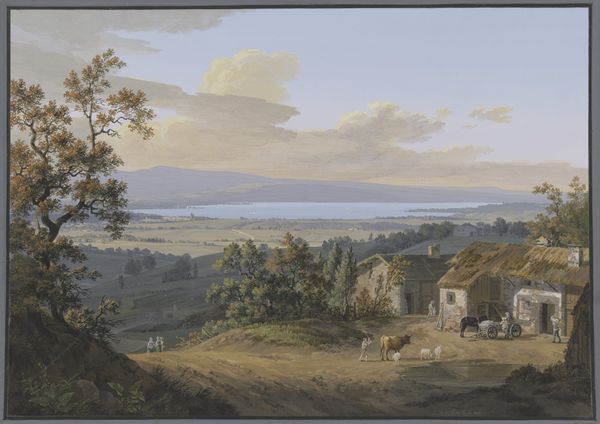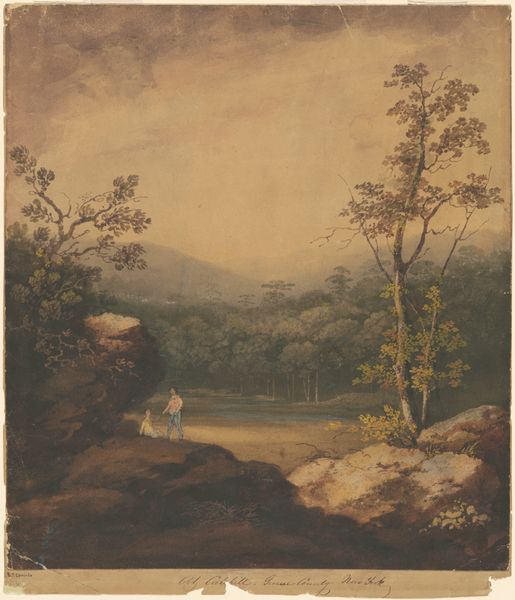
painting, oil-paint
#
baroque
#
dutch-golden-age
#
painting
#
oil-paint
#
landscape
#
oil painting
#
genre-painting
#
history-painting
#
realism
Dimensions: 24 x 36 in. (61 x 91.4 cm)
Copyright: Public Domain
Curator: This is "A Brazilian Landscape," a painting from around 1650 by Frans Post, rendered in oil paint. It currently resides here at the Metropolitan Museum of Art. Editor: My immediate reaction is one of…almost unsettling stillness. The landscape itself is vast, even inviting, but the small group of people seem paused, caught between actions. Curator: That pause is interesting, isn't it? Post was one of the first European artists to depict the Americas, and specifically Brazil. He was part of a Dutch expedition, so there's an inherent element of colonial gaze in this seemingly objective landscape. The figures, likely enslaved people or indigenous laborers, are indeed presented almost as part of the scenery, their individual stories subsumed by the overall landscape. Editor: Right. So, the symbols, if you will, point toward the economics of landscape. That this isn't simply a beautiful vista, but an exploited resource. I'm struck by how the light, particularly in the sky, creates such a delicate, even peaceful mood, which clashes sharply with the implications of the human figures present. Curator: Precisely. The "realism" here is a very specific type – the artist gives us this idyllic, classically composed image, yet the actual circumstances would have involved profound displacement, forced labor, and violence. Even the exotic flora and fauna become, in a way, symbolic trophies of colonization. They suggest exploration and opportunity for the Dutch Empire. Editor: The perspective draws your eye far into the distance, past the human element towards an unknowable vanishing point, again diminishing the human impact against nature’s vastness. It's like nature is allowed to dominate even while resources are plundered. Does the cultural memory of the work change through the centuries? Curator: Absolutely, how can it not? Today, we hopefully view the work with a heightened awareness of colonial history, a critical lens to consider the perspectives omitted, that is a step in the right direction. It challenges viewers to acknowledge the layered realities within seemingly simple depictions. Editor: The "Brazilian Landscape" serves as a sobering reminder of the narratives embedded in landscape painting. It shows that they are never just passive recordings. The canvas is forever charged. Curator: Agreed. It offers us a valuable glimpse into the complex interplay between art, history, and the ever-evolving way we interpret cultural representations.
Comments
No comments
Be the first to comment and join the conversation on the ultimate creative platform.

